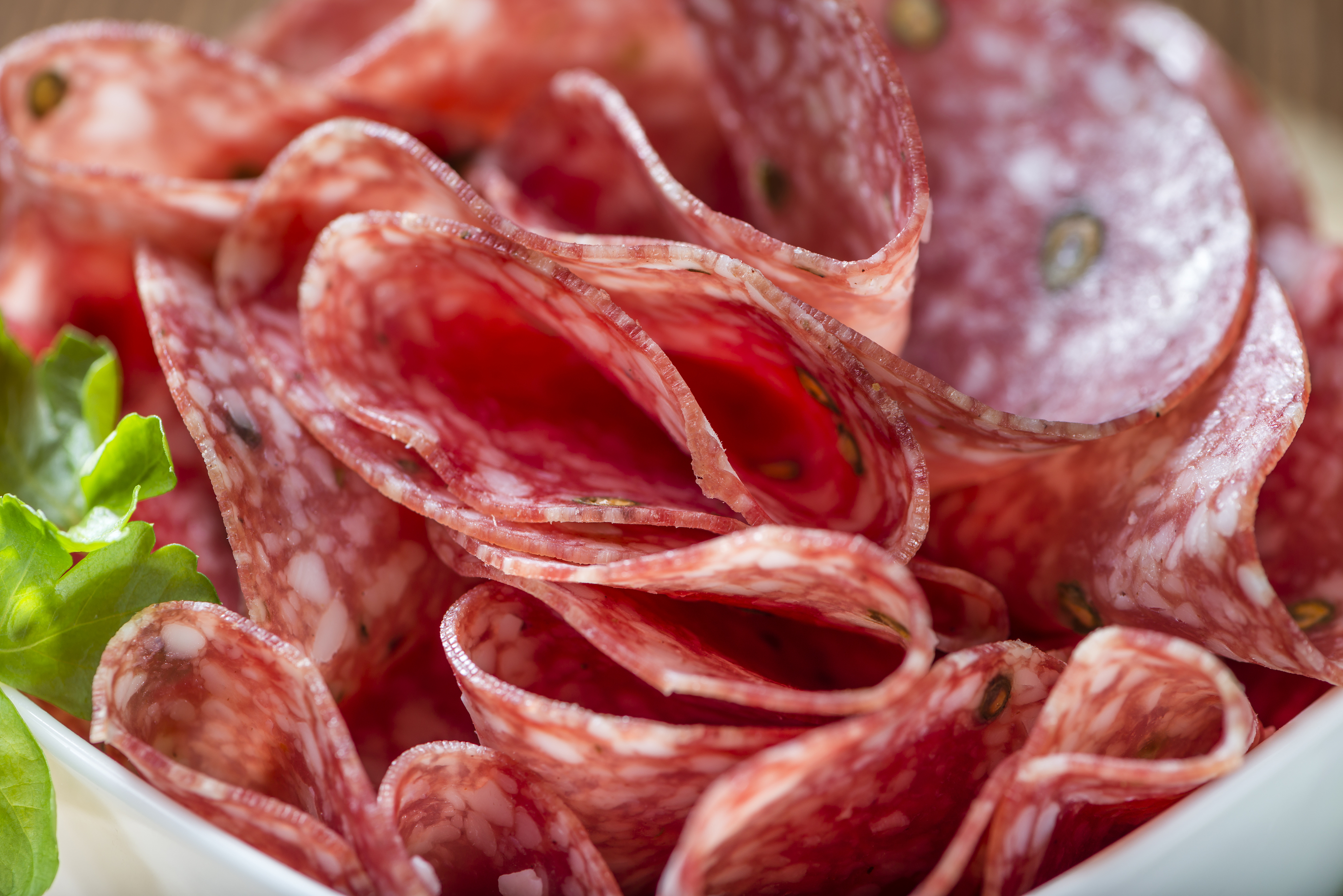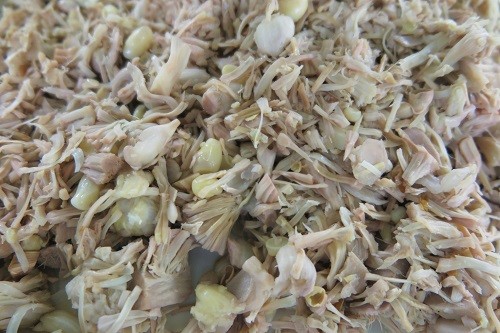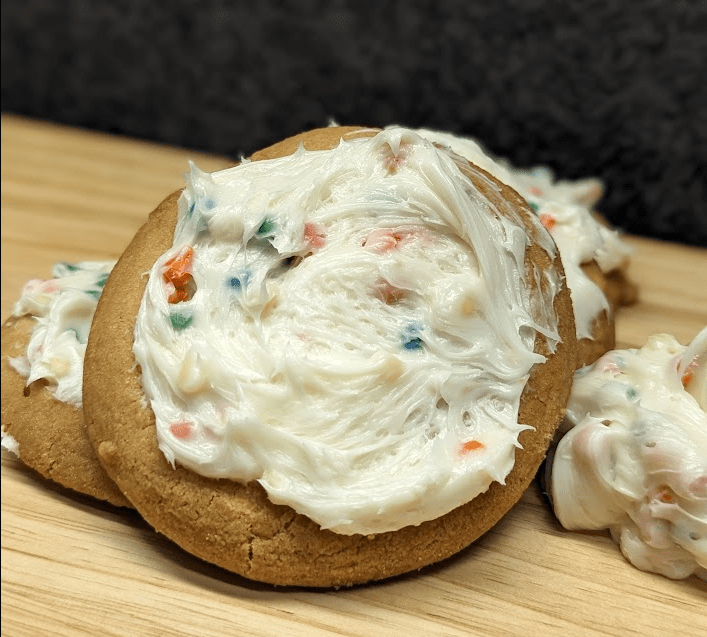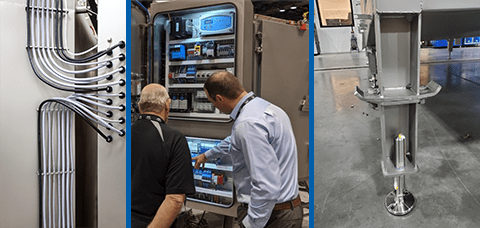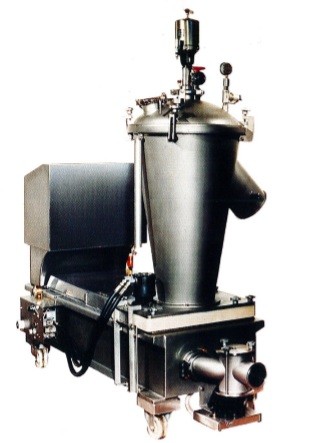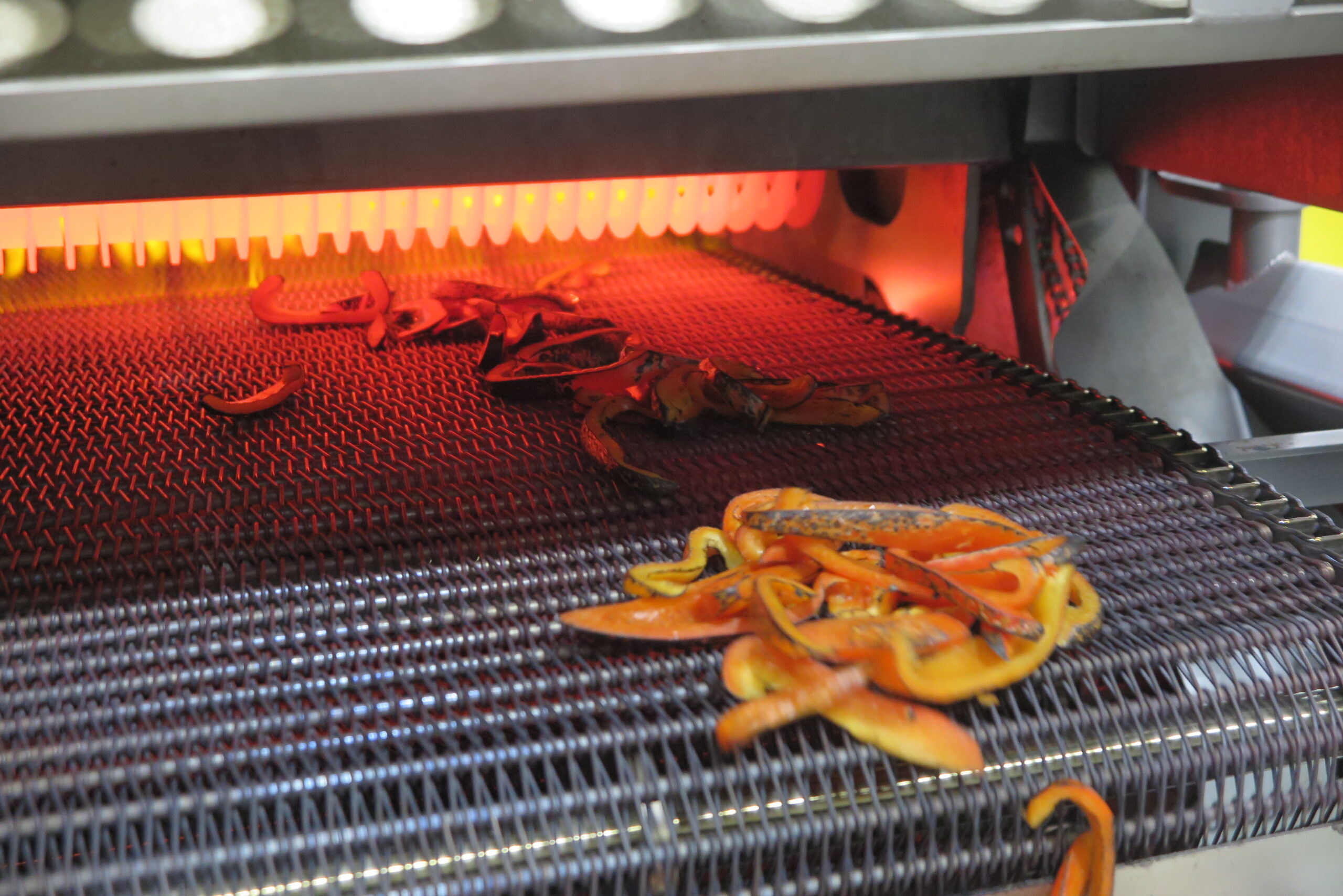Controlling rising temperatures during meat grinding can be difficult and poses a threat to product safety. Additionally, when handling the meat grinding process separate from the vacuum stuffing process, it requires more human handling which introduces more opportunity for food safety issues.
When product is fed by a vacuum pumping and stuffing system into an inline grinder, product not only features improved particle definition, less smear and reduced cell structure damage, but is stuffed with minimal temperature rise and less human intervention. The result is optimum product appearance, product quality and safer food products.
Let’s walk through the advantages of vacuumized inline grinding for whole muscle and emulsified meat and poultry products.
Vacuumized inline grinding results in consistent, clean cuts for excellent particle definition.
Product is first mixed and then loaded into the hopper of the vacuum stuffing system where a vacuum is pulled to remove as much air in the product as possible. Prior to being vacuum pumped into the casing, the inline grinder’s knife blades deliver precise, clean cuts that produce consistent particle definition, without smear. When the grinding is performed inline, it requires only one pass (final grind) and therefore does not cause the product degradation one gets when regrinding meat and poultry products. The single cut design of Marlen’s inline grinder also results in decreased drying times and increased shelf-life. In addition, controllable variable cut lengths with knife speeds up to 240 RPM provide the industry’s highest production rates. Cutting speed is controlled which results in complete control of product texture and cut length to maximize product appearance.
Inline grinding with optional bone collection produces even higher quality deli meats.
When connecting a high-quality continuous vacuum grind stuffing system with an automatic bone collection system, food processors can produce top quality whole muscle and emulsified meat and poultry products such as pepperoni, salami, and fresh sausages for which the structure and particle definition must be maintained. The bone separation system removes sinew, bone and rind at high production levels for a high-quality raw material.
Minimal temperature rise results from inline vacuumized grinding, thus reducing smear.
Temperature rise related to Marlen’s Vari-Kut inline grinder is not more than 0.5 degrees. Tests conducted at a midwestern university utilizing meat at temperatures of 30° and 32° F proved that Marlen’s continuous vacuum grind system had the lowest temperature rise versus all other types of particle definition equipment. Minimal temperature rise during vacuum stuffing and grinding results in product without smear and reduced cell structure damage.
Inline grinding saves space, processing steps and enhances food safety
As this article Assessing in-line grinding points out, the meat doesn’t have to be transported from the grinder to the stuffer by either dump buggies or conveyors, and as a result, less space is required. In addition, the article highlights that being a closed system reduces the potential for environmental contamination, whether its biological, physical or chemical.
Why inline grinding does not work with products requiring a final mixing step
Some deli meats (e.g. cooked sausages) contain encapsulated acids, cheese and other inclusions, and therefore are not good candidates for vacuumized inline grinding. While it doesn’t work for all meat processors, inline grinding does offer those than can implement it into their production process the quality they demand in terms of product appearance and bone-elimination control.












